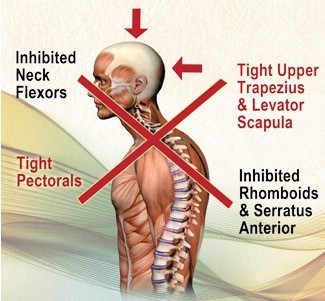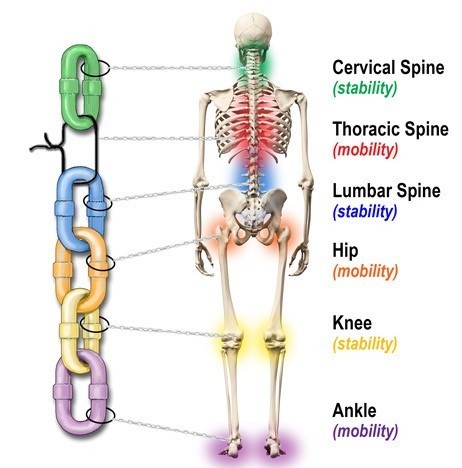×
If you're like most of us, you were probably taught that you need to stretch to relieve muscle tension and pain. Science, however has moved on. Researchers now believe that some of the old methods of warming up and holding a stretch for 20-30 seconds can actually be more harmful than good, known as static stretching.
I am often asked, why do I always feel tight? I do loads of stretching then after a few days the tightness returns. Stretching is the conventional way of dealing with tight muscles; treating the symptoms instead of trying to figure out the cause.
 Let's take the shoulders and neck; my patients are often reporting tension and pain in these areas. If you have: rounded shoulders, forward head, excessively curved thoracic spine (upper back) or an inability to reach your arms overhead and squeeze your shoulder blades together without pain, then there are important factors which need to be addressed, and static stretching may not be the answer.
Let's take the shoulders and neck; my patients are often reporting tension and pain in these areas. If you have: rounded shoulders, forward head, excessively curved thoracic spine (upper back) or an inability to reach your arms overhead and squeeze your shoulder blades together without pain, then there are important factors which need to be addressed, and static stretching may not be the answer.
The reason why stretching does not help is joint restrictions. If your joints are restricted and you have rounded shoulders you can stretch until the cows come home but it will make no difference. Without proper joint movement and stability your body will instinctively tighten up to protect the joints so that they do not become damaged. Many of our joints actually need mobility and stability- see diagram.
Technology has changed our lives. In some cases this is for the better but for our health it can be detrimental, especially if you a have job that involves sitting at a computer for 8 -10 hours a day, and this is just not what human bodies were designed to do. When you sit for long periods of time your muscles will stiffen up due to lack of movement as well as poor oxygen supply and blood flow to the muscles.
 Flexibility is specific to individuals, and to improve the range of motion for dynamic movements you will need to mobilise the joints and loosen tight muscles and fascia. Fascia is the connective tissue between muscles fibers that maintains the muscle structure. Fascia can develop adhesions and scar tissue and these restrictions must be addressed to improve flexibility.
Flexibility is specific to individuals, and to improve the range of motion for dynamic movements you will need to mobilise the joints and loosen tight muscles and fascia. Fascia is the connective tissue between muscles fibers that maintains the muscle structure. Fascia can develop adhesions and scar tissue and these restrictions must be addressed to improve flexibility.
In today's culture some people think more is better, but when this is applied to stretching more can actually be worse for your body. As an Osteopath I tend to think less is more. Stretching aggressively will lead to stretching things that do not want to be stretched, such as ligaments. Ligaments are designed to protect your joints, if your muscles contract when they are supposed to, the ligaments come in and ensure your joint stays stable. When you over stretch your ligaments that's when damage occurs which will make the joint more unstable.
A warm up should do two things: loosen muscles and tendons to increase the range of motion of various joints, and literally warm up the body. A good warm up will increase body heat and blood flow. A warm up can consist of aerobic activity such as light jogging for a period of 5-10 minutes, and 5 minutes recovery.
This includes the abdominals and deep back muscles, as for many individuals, these muscles do not work properly.
Without strength in the muscles a range of motion will not be improved.
In most cases these are responsible for lack of flexibility. If you do not address it you will never be flexible as you want to be.
***
Bradley Blair is an Osteopath The Althos Clinic, Perth. Details for The Althos Clinic can be found on our directory>>>
SCBP1st November 2016
Perthshire's only online magazine